Expert Techniques to Remove Lipstick Stains Effectively
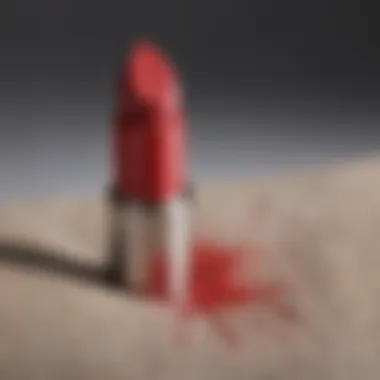
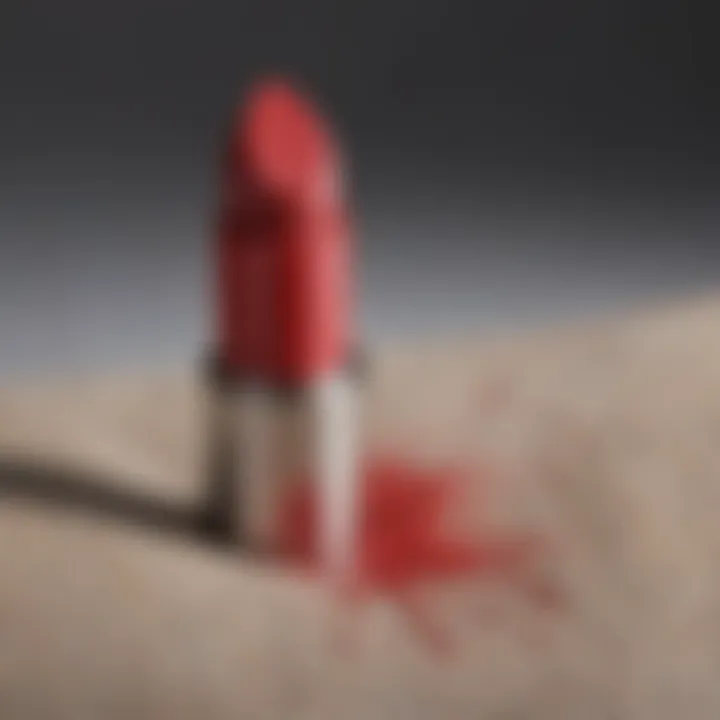
Intro
Lipstick stains on clothing can be a source of frustration for many. These vivid marks often seem stubborn and can deter from the overall appearance of an outfit. With various formulations of lipstick, including matte, glossy, and liquid types, understanding the composition can provide insights into effective cleaning methods. This article will discuss practical techniques for removing lipstick stains, as well as preventive measures for keeping garments clean while enjoying makeup.
Beauty Tips and Tricks
Skincare Routine Tips
Maintaining a good skincare routine can significantly reduce the likelihood of transferring lipstick to clothing. Applying a lip primer before lipstick can create a barrier. The primer adds moisture and minimizes lipstick smudging, making it less likely for the product to come off onto your clothes.
Haircare Hacks
Utilizing a hair bun or hair clip when applying makeup can prevent accidental contact with your clothes. Keeping hair secured away from the face eliminates potential contact with lipstick, especially when applying in front of a mirror.
Makeup Application Techniques
When it comes to applying lipstick, a careful approach can also help avoid stains. Use a lip brush for application, as it allows for precise placement. Additionally, blot your lips with a tissue after application to remove excess product and reduce transfer risk.
Product Selection for Stain Removal
Choosing the right products for stain removal is critical. There are household items and specialized cleaners that work effectively against lipstick stains. Commonly recommended items include:
- Rubbing alcohol
- Dish soap
- Makeup remover wipes
- Stain remover spray
For the best results, always check care labels on garments before applying cleaning agents.
"Act quickly when dealing with stains. The sooner you treat a lipstick stain, the easier it will be to remove."
Step-by-Step Guidance for Stain Removal
To effectively tackle lipstick stains, follow these steps:
- Blot the stain gently. Use a soft cloth or paper towel to blot away excess lipstick without rubbing.
- Apply rubbing alcohol or makeup remover. Test first on an inconspicuous area. If safe, apply with a cotton ball.
- Rinse the area. Hold under cold water to flush out the cleaner and lipstick residue.
- Launder as usual. Follow garment care instructions for washing.
- Check before drying. Ensure stain is gone before putting items in the dryer, as heat can set stains.
Preventive Measures
The best method for managing lipstick stains may be prevention. Always apply lipstick carefully and consider using lipstick that claims to be transfer-proof. Additionally, wearing an apron or old clothing during makeup application can greatly minimize the risk of staining your favorite outfits.
The End
In summary, by understanding makeup application techniques and appropriate stain removal methods, it is possible to maintain the appearance of your clothing. Prevention is key, but when accidents happen, knowing the right steps to take ensures your garments remain in great condition. This guide can help lovers of beauty preserve their fabric integrity while enjoying make-up without concern.
Understanding Lipstick Stains
Understanding lipstick stains is crucial for anyone who deals with makeup. Lipstick, while enhancing beauty, can leave behind stubborn marks on clothing. These stains can be particularly troublesome because they often happen unexpectedly. A sudden movement or a light brush against the fabric can result in a lipstick transfer. Knowing how to address these stains effectively can preserve the aesthetic integrity of garments. The focus here is to provide not just knowledge, but practical strategies for removing such stains, making a significant difference in how one approaches cleanup.
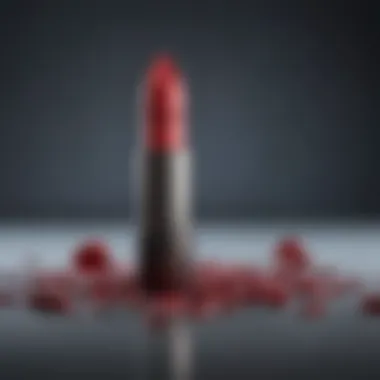
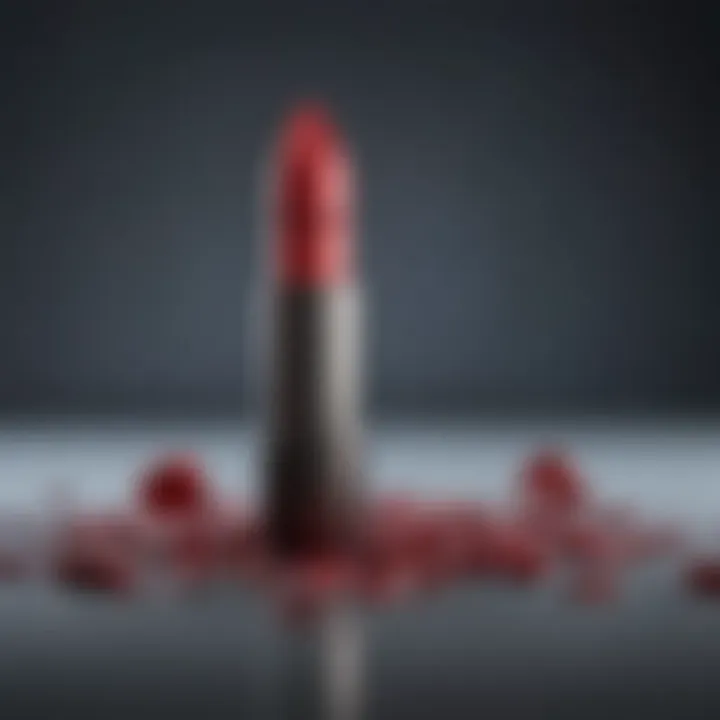
What Causes Lipstick Stains
Lipstick stains occur primarily due to the waxes, oils, and pigments found in lip products. These components have strong adherence properties that enable them to stay on the lips throughout the day. During contact with fabric, these elements transfer easily, creating a challenge for removal. Furthermore, the variety of applications, from stains to glosses, leads to different levels of stickiness.
Chemical Composition of Lipsticks
Most lipsticks contain a mix of ingredients that contribute to their color and texture. Common components include:
- Wax: This ingredient gives lipstick its form and helps it glide on the lips smoothly.
- Oils: They provide moisture and softness, but can also lead to greasy stains on fabric.
- Pigments/Dyes: These are responsible for color, and certain formulations have more intense colorants that are harder to remove.
Understanding these ingredients is essential because they explain why some lipsticks create more persistent stains than others.
Why Lipstick Stains are Difficult to Remove
The difficulty in removing lipstick stains comes down to their chemical structure. Lipsticks are designed to be long-lasting, which means they bind effectively to both skin and fabric. Their oil-based formulas do not dissolve easily in water, making traditional washing methods ineffective. Additionally, the fabric's texture plays a role; smooth fabrics like silk may resist stains differently compared to textured ones like denim. An effective removal method requires knowledge of the stain's makeup along with appropriate cleaning techniques.
"Understanding the nature of the stain is the first step toward successful removal."
Grasping the relationship between the lipstick's composition and its staining properties arms readers with tools to tackle these challenges head-on.
Preparation for Stain Removal
Preparing for the stain removal process is a crucial step, as it sets the foundation for effective treatment of lipstick stains. Without proper preparation, one risks making the stain worse or damaging the fabric. Assessing the specific fabric and gathering necessary supplies ensures that the approach taken is suitable for the material, minimizing damage and maximizing effectiveness.
First, identifying the fabric type allows one to choose a method that aligns with its sensitivities. Different fabrics react differently to cleaning agents. Some may be more resilient, while others are prone to fading or distortion. This consideration can greatly impact the success of stain removal.
Next, gathering the right supplies is key to an efficient process. Having everything ready at hand reduces the risk of postponing the removal task, which might result in the stain setting deeper into the fibers. The right tools can make all the difference in restoring the fabric to its original state.
By aligning the removal method with the fabric type and ensuring that necessary supplies are gathered in advance, one sets themselves up for success in tackling those stubborn lipstick stains.
Methods for Removing Lipstick Stains
Removing lipstick stains effectively is crucial for maintaining the integrity of fabrics. Lipstick is often oily and pigmented, leading to challenging stains. Therefore, knowing how to deal with such stains can prevent permanent damage to garments. In this section, we will explore various techniques to remove lipstick stains using household items and commercial products. This understanding is essential as it allows individuals to choose the best method based on their situation and the fabric type involved.
Using Rubbing Alcohol
Application Process
The application process for using rubbing alcohol to remove lipstick stains is straightforward yet effective. To begin, place the stained fabric on a clean, absorbent cloth. Dampen a second cloth with rubbing alcohol and blot the stain gently. This method is popular because rubbing alcohol penetrates the stain, breaking down the oils and pigments in lipstick.
One significant advantage of this method is its efficiency. Many people find that rubbing alcohol acts quickly against stubborn stains. However, it's vital to test on a small area first, as some fabrics may react negatively to the alcohol.
Safety Considerations
When dealing with rubbing alcohol, safety is a priority. Ensure you are in a well-ventilated area, as the fumes can be strong. Also, avoid contact with your eyes and skin. Rubbing alcohol is flammable, so keep it away from heat sources.
The key characteristic of safety considerations is in its ability to prevent potential hazards while cleaning. By understanding these aspects, one can confidently use this method without risking harm to themselves or their surroundings. However, improper usage can lead to fabric damage, so always follow instructions carefully.
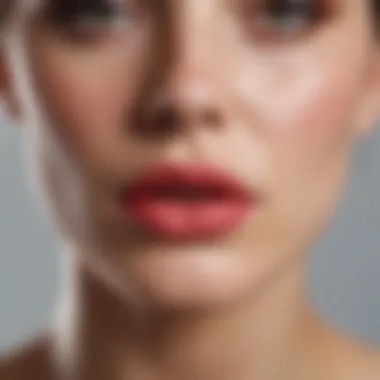

Dish Soap and Cold Water
Creating the Solution
Creating the solution with dish soap and cold water is a simple yet effective strategy. Mix a few drops of dish soap in a bowl of cold water. This solution is beneficial because dish soap is designed to cut through grease, making it suitable for oily stains like lipstick.
One unique feature of this method is its accessibility. Most households already have dish soap readily available. The disadvantage, however, is that it may not work on old or set stains, requiring a more potent solution in some cases.
Step-by-Step Instructions
The step-by-step instructions for this method are essential in providing clarity. Wet a clean cloth with the soap solution, then blot the stain gently. Avoid rubbing as this can spread the stain further. Rinse with cold water and repeat if necessary.
These instructions are straightforward, making it a favored choice for many. The systematic approach ensures that anyone can follow it regardless of their cleaning experience. Yet, be prepared to repeat the process for significant stains, as it may take longer to see results.
Commercial Stain Removers
Choosing the Right Product
When it comes to choosing a commercial stain remover, understanding the label is critical. Some products specifically target makeup stains, particularly lip-related ones. The effectiveness of these products often hinges on their active ingredients.
Selecting the right product is beneficial because it saves time and effort. The broad range of options allows one to find a solution that suits their specific needs. However, not all stain removers are gentle on fabrics, so testing on a small, inconspicuous area is always wise.
Proper Usage Techniques
Proper usage techniques of commercial stain removers are vital for achieving the best results. Always follow the manufacturer’s instructions closely. Common guidance includes applying the product directly to the stain and letting it sit for a specified time before rinsing.
This method's key feature is that it can be very efficient, often targeting tough stains in one application. However, overuse or incorrect usage can lead to residual buildup, which may eventually attract more dirt.
Professional Cleaning Services
When to Seek Professional Help
Knowing when to seek professional help can save a treasured piece of clothing from damage. In cases where stains persist after several attempts at home remedies, professional cleaning services can provide expertise. They have specialized techniques and products not readily available to the average consumer.
The defining characteristic of professional services is their ability to handle a variety of fabrics safely. However, the cost can be a disadvantage for many. Thus, weighing the value of the garment against cleaning expenses is necessary.
The Cost-Benefit Analysis
The cost-benefit analysis of using professional cleaning services sheds light on practical decisions. While it may seem expensive upfront, investing in professional cleaning can often prolong the life of a garment. This approach is particularly useful for high-value items where DIY methods could cause irreparable damage.
The unique feature of this analysis lies in its consideration of both financial aspects and the emotional value of clothing. While paying for professional services may not suit everyone, it can be the best option for those who want to ensure their clothing remains in pristine condition.
Preventive Measures
Taking steps to prevent lipstick stains from occurring in the first place can save you time and frustration later. The importance of preventive measures in maintaining the integrity of your clothes cannot be overstated. Understanding how lipstick interacts with different fabrics, and making informed choices from the outset can reduce the likelihood of stubborn stains.


Choosing the Right Lipstick
When selecting lipstick, consider the formulation. Some lipsticks are designed for long-lasting wear but may be harsher on fabrics. Opting for lighter, less pigmented options or those marketed as "non-transfer" can significantly cut down the risk of staining. Products such as Maybelline SuperStay Matte Ink or Revlon ColorStay may offer the durability you desire without compromising the fabric of your clothing.
Additionally, consider the texture. Creamy and glossy lipsticks tend to transfer more than matte types. If you expect to be in environments where clothing contact is common, such as crowded events, it's worth choosing a product noted for its transfer resistance.
Application Techniques to Minimize Staining
How you apply lipstick also plays a critical role in minimizing stains. There are several techniques you can use to limit the amount of lipstick that may come into contact with your clothing. Here are some strategies:
- Use a Lip Liner: Start by outlining the lips with a lip liner. This can help create a barrier, reducing the chances the lipstick will bleed or transfer.
- Apply with Precision: Using a lip brush allows for more control during application, lowering the risk of accidental smudges on your clothes.
- Blot After Application: After applying your lipstick, gently blot your lips with a tissue. This reduces excess product that could transfer to your clothing.
- Set with Powder: Lightly dusting translucent powder over your lipstick can help set the color, making it less likely to come off on fabrics.
Preventive measures are essential to maintaining the appearance of clothes. Implementing these strategies can enhance your experience with makeup while protecting the integrity of your garments.
Aftercare for Clothes Post Stain Removal
After addressing a lipstick stain, the care for your clothing does not end. The aftercare process is crucial for preserving the fabric's quality and ensuring no further damage is inflicted. Proper aftercare can help maintain the garment's color and texture, while also reducing the chances of future stains.
The first step in this aftercare process is washing the affected garment. After applying the chosen stain removal method, it is essential to follow correct washing instructions. This ensures that remnants of the cleaning agents do not affect the fabric adversely. Using cold water is often preferable, as heat can set stains and make them harder to remove. Also, choosing a detergent that is suitable for the garment's fabric type will enhance the cleaning process.
Another significant aspect of aftercare is checking for any remaining stains after washing. Sometimes, even after careful treatment, traces of the lipstick stain may linger. Inspecting the item before drying is essential because heat from dryers can set any lingering stains, making them permanent. If any traces remain, repeat the stain removal process before drying.
This attentiveness during the aftercare phase not only prolongs the life of your garment but also saves time in the long run. Below is a detailed insight into the two important components of aftercare: washing instructions and checking for remaining stains.
Washing Instructions
When washing an item that had a lipstick stain, consider the following steps:
- Rinse with Cold Water: Begin by rinsing the stained area with cold water. This helps to remove any residue from the stain removal process without setting the stains further.
- Select the Right Detergent: Use a detergent that is gentle yet effective for the fabric type. For delicate fabrics, consider using a mild detergent designed for those materials.
- Use the Appropriate Cycle: Choose a washing cycle that fits the fabric's needs. A gentle cycle is often a safe option for most fabrics but can depend on the specific item being cleaned.
- Avoid Hot Water: Always steer clear of hot water, as it can set stains and is harsh on many fabrics. Cold or lukewarm water is generally best for both washing and rinsing.
Following these guidelines will help ensure that the garment retains its integrity and is free from any lingering stain components.
Checking for Remaining Stains
After washing, take the following steps to verify if the stain is completely gone:
- Visual Inspection: Examine the stained area closely. Look for discoloration or any remnants of the lipstick stain that may have survived the cleaning process.
- Touch Test: Run your fingers over the area. If it feels rough or sticky, it might indicate that traces of the stain or the cleaning product remain.
- Reapply Treatment if Needed: If any signs of the stain linger, repeat the chosen stain removal method before drying the garment. This is important as drying can lock the stain in.
Tip: Always check the care label of your garment to ensure that the cleaning methods you use are appropriate for the fabric type.
Being diligent about aftercare enhances your garment's lifespan and usability. This way, you can efficiently manage the effects of makeup stains without compromising quality.
Culmination
In the realm of garment care, the ability to handle lipstick stains efficiently is essential. This article has laid out comprehensive methods for removing such stains, addressing their unique properties and the challenges they present. Understanding these stains goes beyond mere cleaning; it encourages better practices to preserve clothing integrity.
Summary of Key Points
- Understanding the Composition: Lipstick formulations often contain waxes and oils, which create a bond with fabric fibers, making removal complex.
- Preparation Matters: Identifying the fabric type and gathering the right cleaning supplies sets the stage for effective stain removal.
- Effective Removal Techniques: Methods using rubbing alcohol and dish soap have proven effective, while commercial stain removers offer more potent solutions when needed. Considerable care must be exercised with delicate fabrics.
- Preventive Strategies: Selecting lipsticks with lower staining potential and employing application techniques can reduce the occurrence of stains.
- Aftercare Importance: Following cleaning instructions and checking for residual stains are crucial steps to ensure longevity of garments post-cleaning.
Final Thoughts on Lipstick Stain Management
Engaging in conscientious lipstick stain management contributes significantly to maintaining the quality of clothes. The detailed methods outlined provide not just techniques, but also a framework for informed decision-making when faced with staining incidents. Incorporating effective cleaning habits will not only extend the life of garments but also promote a confident approach to makeup application. Clean fabric produces a certain satisfaction, enhancing overall wearing experience without the lingering anxiety of unsightly stains.







